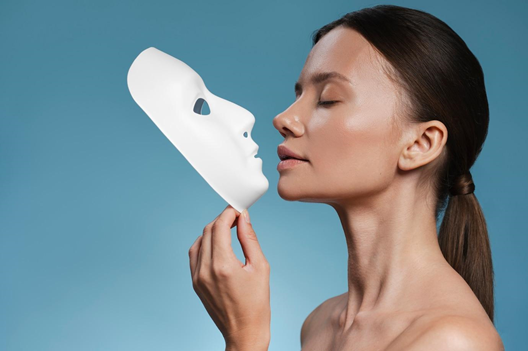
The Benefits Of Rhinoplasty: Enhancing Facial Harmony And Self-Confidence
Are you looking to enhance your facial features and boost your self-confidence? Rhinoplasty, or a nose job, might be the solution you’ve been seeking. This popular procedure offers more than just a physical transformation – it focuses on achieving facial harmony and helping you feel comfortable in your skin. Rhinoplasty can refine the shape of your nose while addressing functional concerns like breathing difficulties and structural issues. Whether you’re correcting a birth defect, enhancing your appearance, or improving your breathing, rhinoplasty provides a range of benefits that go beyond aesthetics. Discover how this transformative procedure can enhance both your appearance and self-assurance, positively impacting your life.
Understanding Rhinoplasty
Rhinoplasty is a surgical procedure that reshapes the nose to address both aesthetic and functional concerns, such as size, nostril width, and the angle between the nose and upper lip. While it’s often considered a cosmetic surgery, it can also improve breathing and fix structural issues. The procedure is usually performed under general or local anesthesia. It starts with a thorough consultation where a skilled rhinoplasty surgeon evaluates your facial features, skin quality, and nasal structure. The surgeon may use imaging tools to help visualize potential results and set realistic expectations. The surgery typically takes one to three hours and is customized to meet your needs. Thanks to modern techniques, recovery times are shorter, and the procedure is safer, with minimal downtime for most patients.
Importance Of Facial Harmony In Aesthetics
Facial harmony refers to the balanced proportions of facial features, which greatly impact overall appearance. As a central feature, the nose plays a key role in this balance. A well-proportioned nose enhances other features, boosting confidence and satisfaction. Conversely, a disproportionate nose can detract from the overall beauty. Rhinoplasty addresses these concerns, improving both aesthetics and self-image while potentially enhancing social and professional interactions. Additionally, even subtle refinements to the nose can create a significant difference in overall facial symmetry and attractiveness.
Psychological Benefits Of Rhinoplasty
The psychological benefits of rhinoplasty go beyond appearance, often leading to significant improvements in self-esteem and quality of life. Many individuals report increased confidence in social situations, better relationships, and a more positive outlook. For those dissatisfied with the appearance of their nose, social anxiety and self-consciousness can hinder participation in activities, but rhinoplasty often alleviates these concerns, allowing individuals to feel more comfortable in their skin. Studies have shown that such cosmetic procedures can also reduce symptoms of depression and anxiety, as the psychological boost from improved appearance encourages healthier lifestyles, new opportunities, and more fulfilling relationships. This transformation can enhance overall happiness and well-being.
Common Reasons For Considering Rhinoplasty
Individuals consider rhinoplasty for various reasons, from aesthetic enhancements to medical needs. Many seek to refine their nose’s shape, whether by reducing its size, straightening a crooked bridge, or achieving better facial harmony. Others undergo the procedure to correct congenital deformities or injuries that have altered the nose’s structure and function. Additionally, rhinoplasty can address breathing difficulties caused by structural issues like a deviated septum, improving both appearance and quality of life. By combining cosmetic and functional benefits, rhinoplasty helps individuals feel more confident and breathe more easily.
Types Of Rhinoplasty Procedures
Rhinoplasty is classified into open and closed techniques. Open rhinoplasty involves an incision across the columella, offering better visibility for complex cases. Closed rhinoplasty, with incisions inside the nostrils, leaves no visible scars and allows for quicker recovery, but is best for minor adjustments. Additional procedures like septoplasty for a deviated septum or rhinoplasty for nasal obstruction can be combined with rhinoplasty to enhance both function and aesthetics.
Preparing For Rhinoplasty Surgery
Proper preparation is essential for a successful rhinoplasty. A thorough consultation with the surgeon includes discussing medical history, medications, and health conditions, along with a physical examination. Setting realistic expectations and reviewing before-and-after photos can help patients understand potential outcomes. In the weeks before surgery, patients should avoid certain medications, smoking, and alcohol to promote optimal healing. Following pre-operative instructions carefully enhances both the surgical process and recovery.
Recovery Process After Rhinoplasty
Recovery after rhinoplasty requires patience and proper care. Swelling and bruising around the nose and eyes are normal, and a splint is typically placed for about a week to support healing. Rest, avoiding strenuous activities, and keeping the head elevated help reduce swelling. Pain medication and cold compresses can aid in comfort. Patients should also avoid blowing their nose or wearing glasses that rest on the bridge during early recovery. While initial improvements are visible within weeks, final results may take months as swelling gradually subsides. Regular follow-ups ensure proper healing and address any concerns.
Risks And Complications Associated With Rhinoplasty
While rhinoplasty is generally safe, patients should be aware of potential risks such as bleeding, infection, adverse reactions to anesthesia, and changes in nasal sensation. Dissatisfaction with cosmetic results or the need for revision surgery can also occur, especially if expectations are not clearly discussed beforehand. Temporary swelling or numbness may arise during recovery, but these typically resolve over time.
Choosing an experienced ENT surgeon for rhinoplasty offers added advantages. ENT specialists are trained to address both the cosmetic and functional aspects of nasal surgery, ensuring that breathing and sinus health are preserved or improved alongside aesthetic changes. According to ENT experts, patients with structural issues like a deviated septum or chronic sinus problems often benefit from this dual expertise, leading to better long-term outcomes and a smoother recovery.
Conclusion: Empowering Self-Confidence Through Rhinoplasty
Rhinoplasty is more than just a cosmetic procedure—it enhances facial harmony, boosts self-confidence, and can improve both appearance and function. By addressing aesthetic concerns and structural issues, this transformative surgery can have a profound impact on self-esteem and overall well-being. With careful preparation, a skilled surgeon, and realistic expectations, patients can achieve satisfying results and a renewed sense of self. If you are considering rhinoplasty, thorough research and expert consultation can help you make an informed decision about this empowering procedure.
